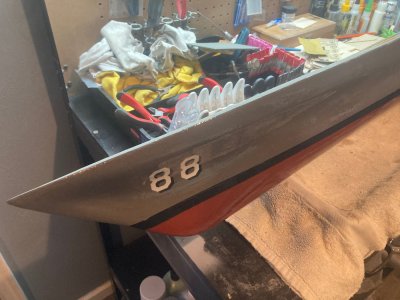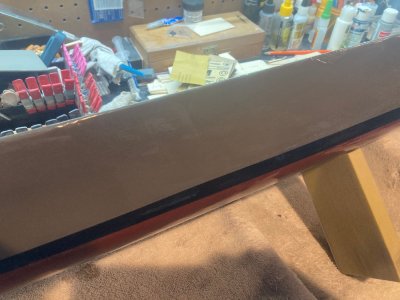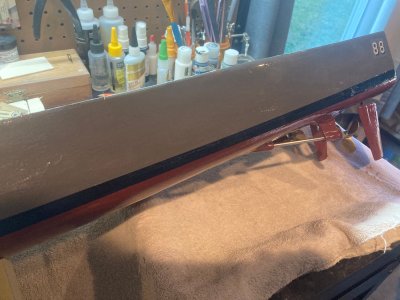Yes, do as the man advises. Use a compatible sanding undercoat, then prime and finish coat on top of that. Be sure your sanding undercoat is compatible with the epoxy. If not, use a compatible primer on the epoxy and then your sanding undercoat. Preparation is 90% of the work in a good paint job. Use a quality oil-based alkyd enamel on the hull for the finish coat. If your hull is smooth and free of cracks, you should not require anything more than your enamel finish coats to protect the hull from any water damage. RC boats aren't in the water for long periods of time and are stored indoors. For some reason, somebody seems to be giving the new RC hull builders the impression that they have to slather their hulls with fiberglass resin or epoxy to "protect them." There's nothing wrong with either, except that it takes a bit of experience to apply any resin and fabric lay-up and most make a dog's breakfast of their first couple of attempts until they find somebody to show them the ropes.









